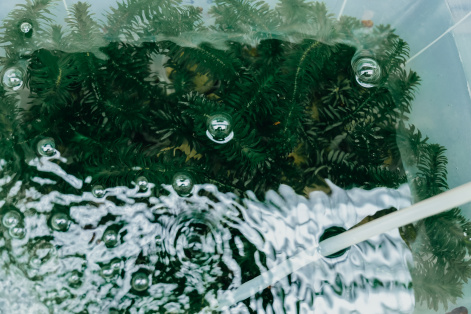Scientist informed about consequences of the wastewater discharge from the Fukushima nuclear power plant into the world ocean
22 April 2021 г. FRC KSC SB RAS

The disaster at the Fukushima nuclear power plant occurred in 2011. To prevent the reactor core from melting, the Tokyo Electric Power Company (TEPCO) pumps about 200 tons of water through the facility every day. Contaminated water is stored in reservoirs, where most of the radioactive elements are removed, with the exception of tritium, a radioactive isotope of hydrogen.
Today, the amount of stored water is about 1.25 million tons and storage space is running out. The disposal plan adopted by the Japanese government envisage the gradual discharge of water, most likely during several decades. The plan is considered to be in agreement with the generally accepted nuclear safety standards, as every year nuclear power plants around the world discharge tritium-containing water.
Nadezhda, Doctor of Physical and Mathematical Sciences, Professor, Leading Researcher at the Institute of Biophysics of the Krasnoyarsk Science Center SB RAS, a member of the Public Council under the Ministry of Ecology and Environmental Management of the Krasnoyarsk Region, President of the Russian-language department of the International Society of Ecological Toxicology and Chemistry (SETAC), Nadezhda Kudryasheva told about potential consequences of this decision:
“It is planned to discharge water purified from radioactive elements into the ocean. At present, the problem is the purification of this water from tritium. Environmental hazards may be associated with low-dose exposures to marine life, primarily microorganisms. Currently, the officially recognized and used linear model of toxicity, which predicts the monotonic suppression of the vital activity of organisms with an increase in the radiation dose. This model is used in the case of doses higher than 0.1 Gray and is not intended for lower radiation doses. The responses of organisms to low-dose exposure are now being intensively studied, but scientists are not yet ready to recommend methods for controlling low-dose effects in practice.
Our team started working with radiation effects about 15 years ago. In recent years, we have dealt with tritium a lot. This radioactive isotope is characterized by low decay energy, soft ionizing ability, being considered one of the most harmless radioisotopes. We are studying its effect on marine microorganisms, namely luminous bacteria. We have shown that low-dose exposure to tritium strongly activates bacteria, and the intensity of their luminescence increases threefold while the content of their vital activity products, in particular, reactive oxygen, increases in the aquatic environment.
It is the activation of microorganisms due to low-dose effects that the problem of the discharge of purified water from the emergency Fukushima NPP into the sea may be associated with. Marine microorganisms are the starting point in the food chain for more complex animals. This process can cause a shift in the environmental balance as related to organisms of different complexity levels, from unicellular bacteria and algae to mammals. At present, it is hardly possible to make an accurate forecast of the scale of these changes. The fact that the presence of natural organics in water alleviates the effect of tritium and other radioactive elements inspires cautious optimism.
The current situation with the damaged Fukushima nuclear power plant emphasizes two major problems: first, nuclear power is capable of globally interfering with natural processes, and second, the results of this intervention are unpredictable. Many ecologists believe that it is necessary to stop using it and to direct efforts to neutralize the already existing consequences, such as the problem of radioactive burials. The modern view on the problem of energy production is as follows: our future lies in the use of safer methods of obtaining energy based on nature-like technologies and concept of sustainable development. The latter means meeting the needs of modern society without harmful consequences for future generations. This concept was first formulated in 1987 in the report of the UN Commission on Environment and Development "Our Common Future".
Share:
